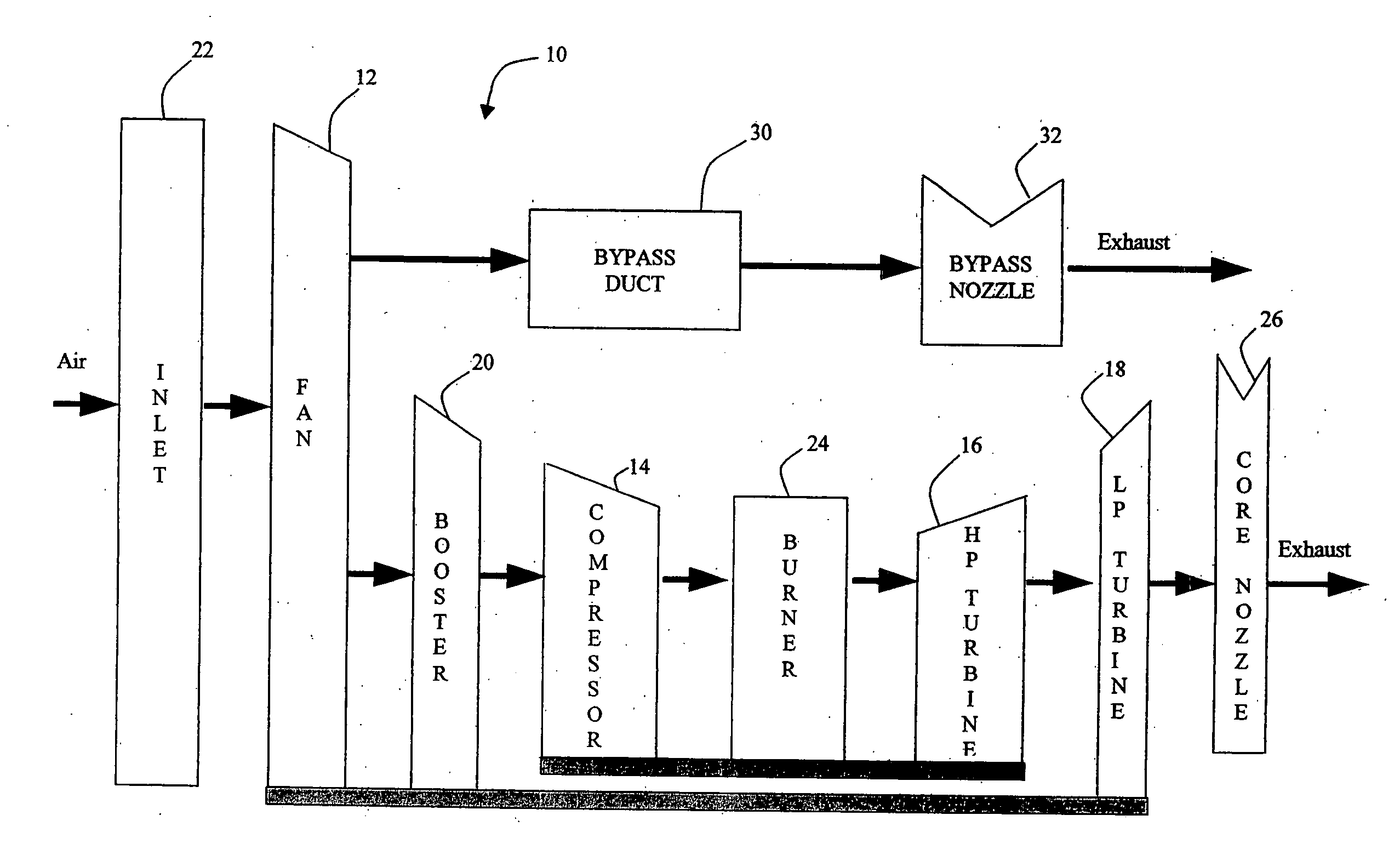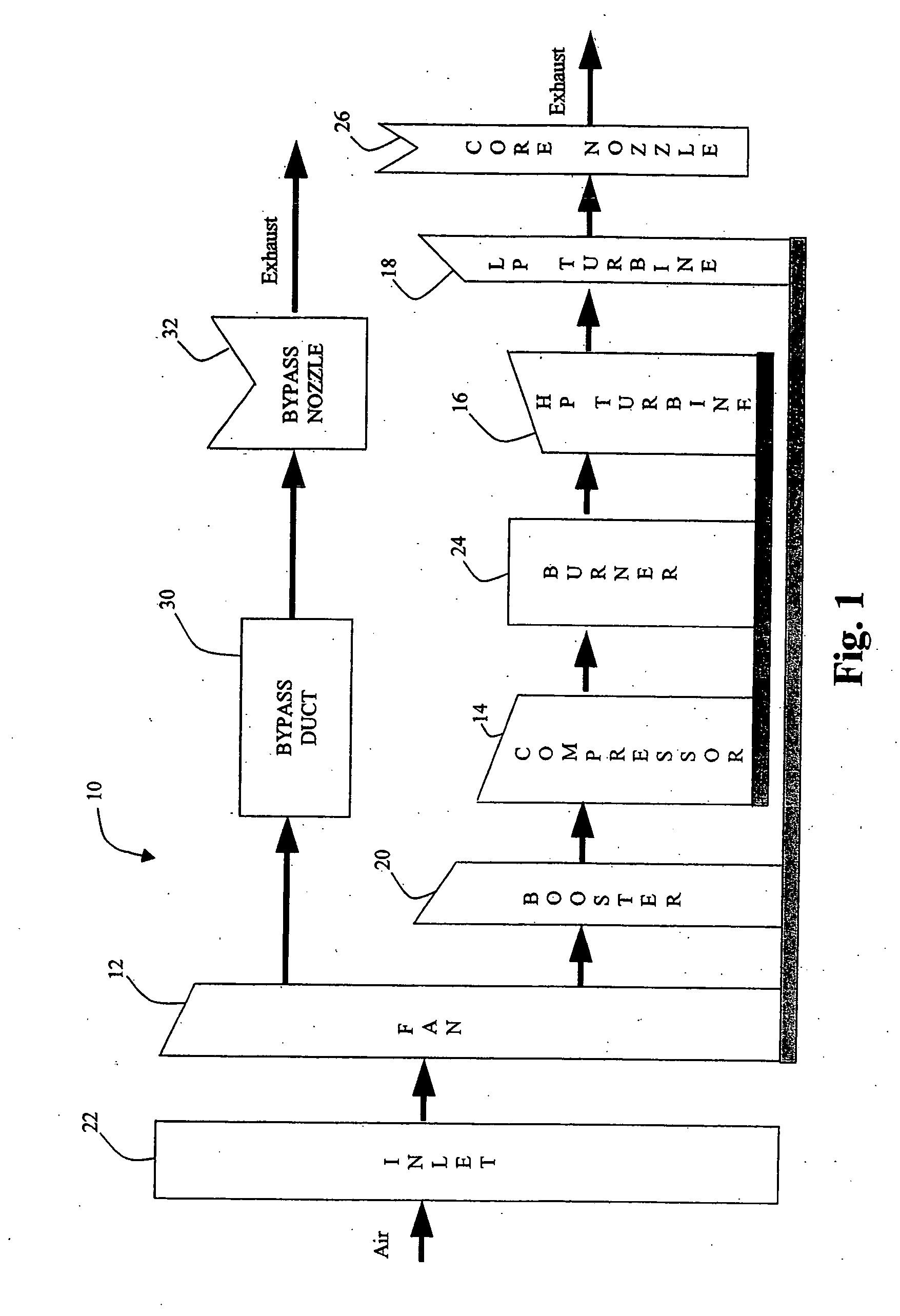Sensor diagnostics using embedded model quality parameters
a sensor and model technology, applied in the direction of machines/engines, instruments, analogue processes for specific applications, etc., can solve the problems of changing the physical size and shape of the engine system, difficult diagnosis of in-range sensor values, and affecting engine performance and efficiency
- Summary
- Abstract
- Description
- Claims
- Application Information
AI Technical Summary
Benefits of technology
Problems solved by technology
Method used
Image
Examples
Embodiment Construction
[0023] Referring to FIG. 1, the Component Level Model (CLM) 10, as illustrated, represents a physics based model. An embedded model of the engine 10 is employed to estimate sensed parameters such as rotor speeds, temperatures and pressures, as well as parameters such as stall margin, thrust and airflow, based on input parameters. Input parameters include environmental conditions, power setting and actuator position. The embedded model may be a physics-based model, a regression fit or a neural network model. The preferred embodiment uses a physics-based aerothermodynamic engine model to individually model each major rotating component of the engine, including the fan 12, compressor 14, combustor 24, turbines 16, 18, duct, 30 and nozzles, 26, 32.
[0024] The CLM 10 is designed to be a fast running, transient engine cycle representation, with realistic sensitivities to flight conditions, control variable inputs and high-pressure compressor bleed. The quality parameters for the CLM compr...
PUM
 Login to View More
Login to View More Abstract
Description
Claims
Application Information
 Login to View More
Login to View More - R&D
- Intellectual Property
- Life Sciences
- Materials
- Tech Scout
- Unparalleled Data Quality
- Higher Quality Content
- 60% Fewer Hallucinations
Browse by: Latest US Patents, China's latest patents, Technical Efficacy Thesaurus, Application Domain, Technology Topic, Popular Technical Reports.
© 2025 PatSnap. All rights reserved.Legal|Privacy policy|Modern Slavery Act Transparency Statement|Sitemap|About US| Contact US: help@patsnap.com



